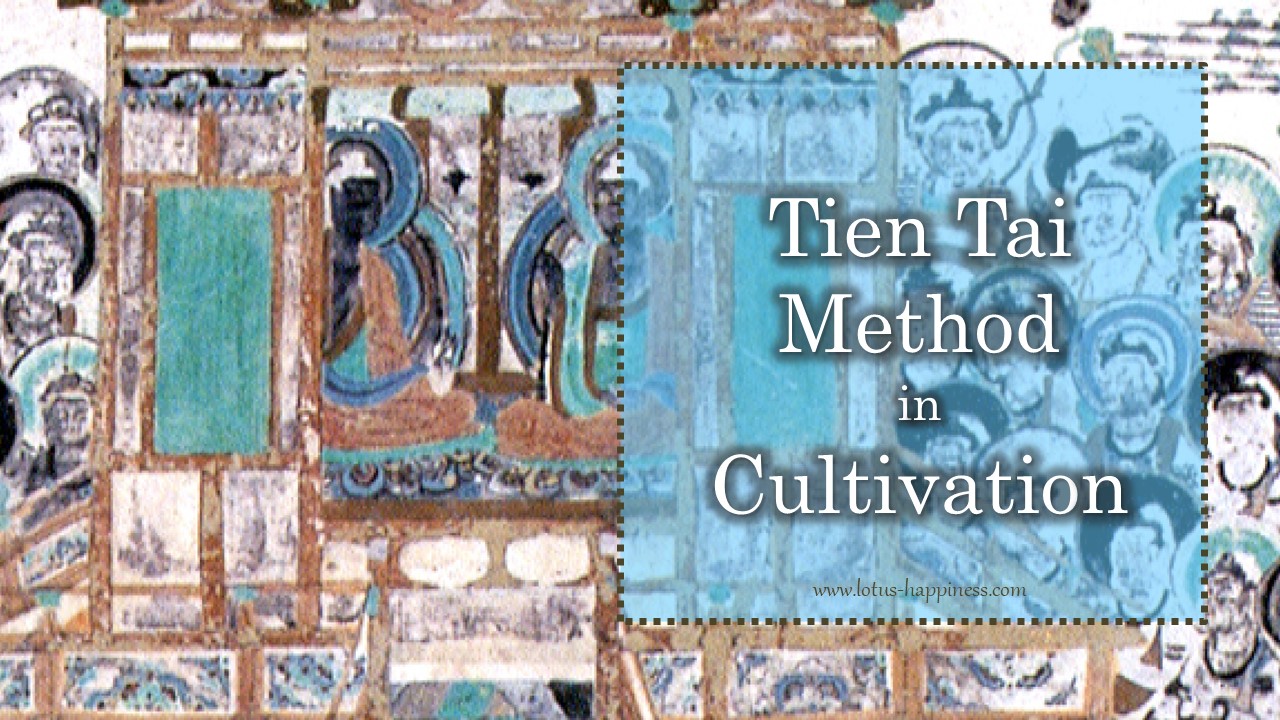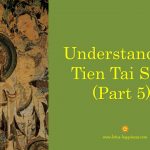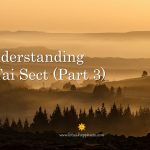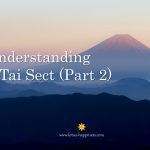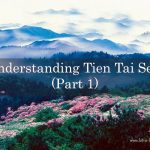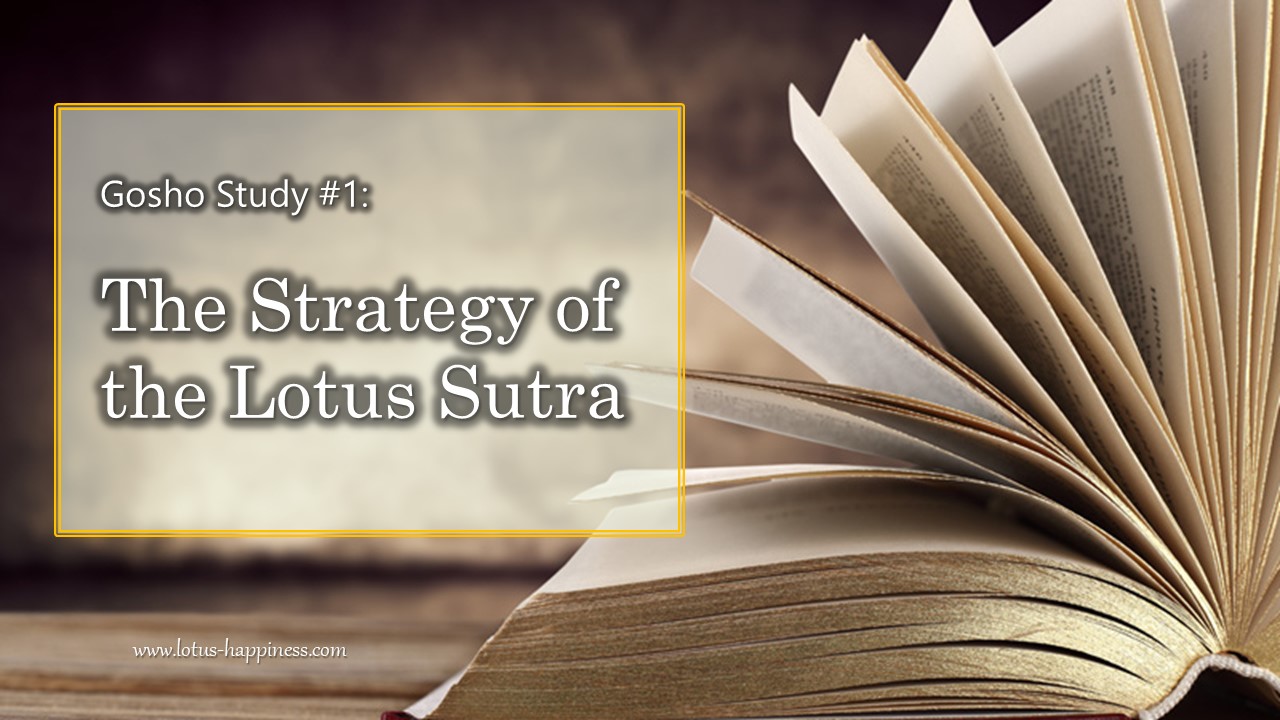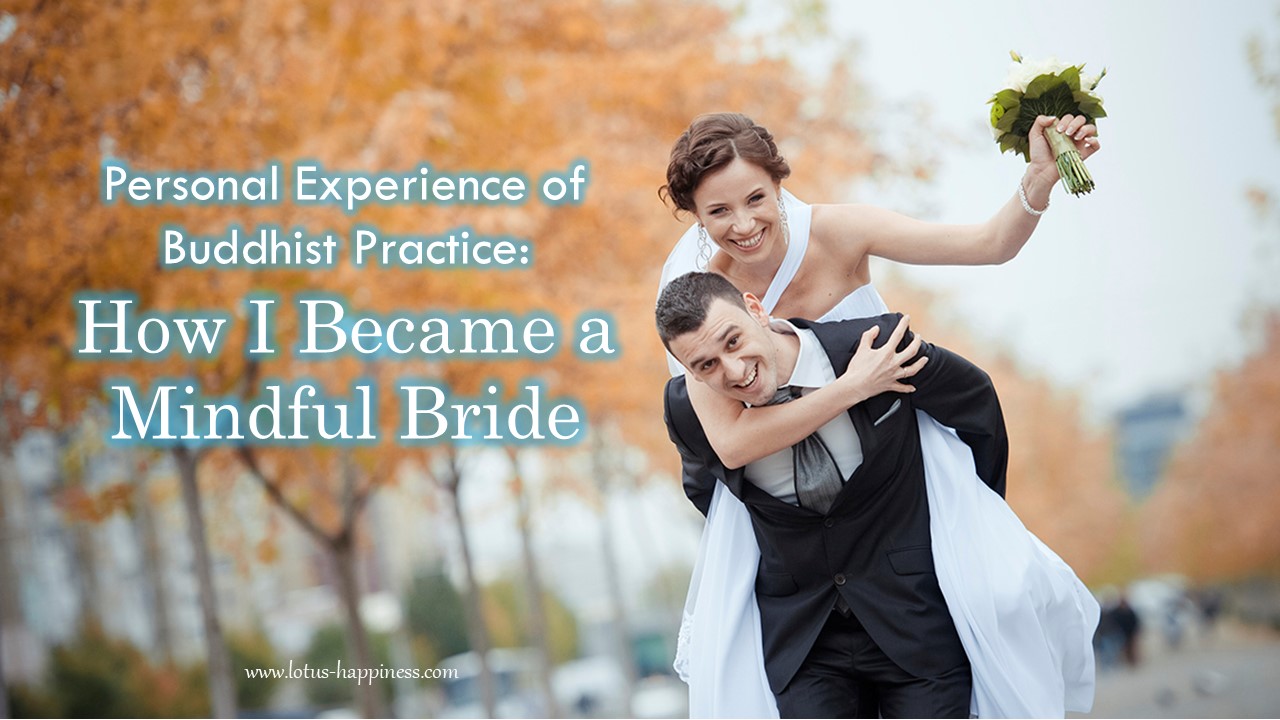Tien Tai Method in Cultivation
Looking into the Mind
As said in all Mahayana Scriptures, Prajna is where there is awareness, therefore the practice of looking into the mind is of fundamental importance for disciplining the mind. Because we are not used to revert ourselves to awareness of the mind in daily life, we are hardly aware that illusions and conceptual thoughts, uncontrollable like an unbridled horse, run wild within us all the time. The fundamental way of cutting off those illusory thoughts at the very root is to look a the self-nature of the mind. Thus the Nibbana Sutra says: “To realize the self-nature of the mind is superlative meditation.” According to this method, whenever and wherever possible, first lay down all thoughts, good or bad, right or wrong, and then look into the present moment-to-moment thoughts vigilantly. As these thoughts come and go all suddenly and are fundamentally unreal and illusory, there is no need of rejecting them, but we should neither accept them nor grasp them nor follow them. All we have to do is to look into them dispassionately and objectively, and this is the way we should be aware of them, for as soon as there is awareness, every thought comes to a standstill and soon goes out.
Practicing Meditation on the Mind
At the initial period of training, most likely we may forget maintaining our awareness all the time, but with consistent and regular practice, say, at least a good many times every day, surely we can intensify our awareness in no time. During the practice it may happen that some thought may linger for as long as three or more days, but this only shows that the seeds of some habits are emerging from within and now turning active. But the practitioner not only should pay no attention to this psychic phenomenon and should bear patiently and firmly with it, but also should concentrate on continuing awareness by adopting a neither grasp nor reject attitude. In this way the mind would be cleared more and more of illusions till it turns to be pure and void. In short, according to the principle of Meditation, that which is capable of awareness is Prajna, and every objective phenomenon of awareness is Ignorance: as Ignorance arises because of its correlation with Reality, logically, looking into the deluded mind is virtually the same as looking into the self-nature of the Pure Mind. If we have the wisdom to perceive Ignorance in this way, we can gradually dispel Ignorance, just like a thick ice melt by sunlight, and then the mind would return automatically and spontaneously to the self-nature, as The Perfect Enlightenment Sutra says: “The Enlightened Mind is pure and all-illuminating.” Also, the Mahayana Meditation on the Mind Sutra says that the Dharma of looking into the mind is “the Way leading to the development of Buddhahood and attainment of Sudden Enlightenment.”
Chih-Kuan Practice by Tien Tai
Next, as a method of looking into the mind, the perfect and sudden Chih-Kuan practice of the Tien Tai is most praiseworthy; whole it cultivates Chih by fixing the mind to meditate on the Ten Dharma-realms and cultivate Kuan by looking into underlying reality of all things, no priority of cultivation is given to the one or the other, but both should be cultivated simultaneously; both its principle and practice aim to realize Sudden Enlightenment, and this is the fundamental thing of this Dharma. It may be desirable to present here concisely for preliminary practice, the Three Meditations of the One Mind. Among the Ten Categories of Phenomena enumerated as objects of meditation in the Treaties of Moho Chih Kuan, the Sixth Consciousness, because it is the illusory mind always working actively with the Five Aggregates and emerging in everyday life and because it is also the root cause of the paramount question of life and death, should be the first object of meditation we may choose for cultivation. And among the Ten Vehicles of Meditation, the Vehicle meditating on the Inconceivable Virtue of the Self-Mind is most profound and complete.
22.4 Virtue of Self-Mind
The Virtue of the Self-Mind consists of the Three aspects of the Void, the Unreal and the Mean.
The Self-Mind neither increases nor decreases and is fundamentally still and void, this is the Dogma of the Void.
The Self-Mind can function without limit and is ever present inn all profound and unreal things, this is the Dogma of the Unreal.
The Self-Mind is both void and unreal, and also neither void nor unreal, this is the Dogma of the Mean.
In reality, all the three dogmas are one and one dogma includes all the three; in other words, they are the three interrelated and indivisible aspects of the Self-Mind, because fundamentally the Self-mind embodies the three interrelated and integrated dogmas, it can hold all the phenomena of the mind and all things of this world and other worlds, the causes and effects, and the form, substance and functions of everything. In short, the fundamental nature of the Self-Mind embraces everything of our everyday life in a flash of thought, and it is not that it exists only now, nor that it did not exist before, nor that it exists vertically nor horizontally; inconceivably, however, it does integrate the Void, the Unreal and the Mean, all in all.
First Set of Four-question Arguments
Now to practice the Tien Tai’s Chih-Kuan method, we may begin with meditation on the three aspects of the Void, the Unreal and the Mean of the inconceivable phenomena of the Virtue of the Self-Mind, and we may also use two sets of four-question arguments (with reference to time and space respectively) to deductively reason out how the self-mind can embrace everything. Here are the four-question arguments of the first set;
-
- Is it that ‘the mind covers everything’ is subjective thought?
- Is it that ‘the mind covers everything’ is to be caused by external conditions?
- Is it that ‘the mind covers everything’ is to be caused jointly by the mind and external conditions?
- Is it that ‘the mind covers everything’ comes about spontaneously without any cause at all?
Referring to the first question, “Is the mind covers everything a subjective thought?”, should the arising of that thought depend on external conditions and in that event, since the mind itself is unattainable, how can it hold everything?
As to the second argument, “if the mind covers everything is due to external conditions”, since fundamentally one has nothing to do with all external conditions, how can the mind hold everything before its integration with the external conditions, how can it do so after the integration?
To say that the mind covers everything is without cause, is pointless, for what is devoid of cause is same as void, and if the mind is void, how can it hold everything?
From this set of four-question arguments, it is obviously clear that so far as the mind itself is unattainable, how can there be everything in the mind? Thus the Madhyamika Shastra says: “Everything does not exist by itself, nor by other causes, nor jointly with the causes, nor without cause. Thus it is known to be non-existent (void)”.
Second Set Four-question Arguments
If we find that the mind would correspond with any of the four-question arguments, we may put aside the others, for then the Sixth Consciousness, empty of illusions, would be in the void, but if the Sixth Consciousness is not free of illusions and therefore not in the void, we would try the other questions, one by one, and also the second set of questions in the following:
-
- Is it that everything is created and annihilated by thought?
- Is it that everything is not created and annihilated by thought?
- Is it that everything both is and is not, created and annihilated by thought?
- Is it that everything neither is nor is not, created and annihilated by thought?
And we may also extend four-question arguments in some other way, e.g.
-
- Is thought horizontal?
- Is thought vertical?
- Is thought both horizontal and vertical?
- Is thought neither horizontal nor vertical?
and so on, until the mind is completely free of illusions and returns of the Void.
Meditation of the Three Dogmas
If the mind is pure, still and void, it will be free and completely detached, and then every thought will also be pure and void, and this is called Meditation of the Inconceivable Void on the Phenomena of the Void, where one is void, all is void. While it is still and void, the Self-Mind, fundamentally immanent in all things, is by no means static like a stone or wood, but is totally and completely aware of everything because of the infinitely of its profound function, this is called Meditation of the Inconceivable Unreal on the Phenomena of the Unreal, where one is unreal, all is unreal. As long as things are perceived as they are, the mind, while illuminating yet still, is completely void and, while still, yet illuminating, is immanent of everything; thus on the one hand, it is neither void nor unreal, and on the other hand, it is both void and unreal; this is call Meditation of the Inconceivable Mean on the Phenomena of the Mean, where one is mean, all is mean. From the fore-going, we may think that the self-mind embodying the Three Dogmas is to be cultivated in the order of the three Meditations, but in realty, none of the dogmas and meditations should precede the others since what they teach us is to intensify awareness to get rid of illusions; if we cultivate our mind in this manner, the three integrated and interrelated Meditations would be all realized at one. If the mind corresponds with the phenomena, the Three Delusions (false perceptions and subjective thinking, subtle and coarse illusions, and Ignorance), will be all eliminated, the Three Wisdom (Sravaka and Praetyka-Buddha Knowledge, Bodhisattva-Knowledge and Buddha-Knowledge) will be all realized and the Triple Virtues (Prajna, Deliverance and Dharmakaya) all accomplished. By that time all the Three Profound Truths of the substance, phenomenon and function of the Self-Mind will be simultaneously manifested. Whereas phenomena are the (Profound) Unreal and meditation is the (Profound) Void, to be detached from both phenomena and meditation is the (Profound) Mean. However, as fundamentally neither meditation nor non-meditation precedes the other, the mind that integrates both of them is nowhere traceable. This is called the Inconceivable Profound Meditation.
A Remark on Meditation
Though the two aforementioned methods of looking into the mind differ in practice, they are fundamentally identical in principle, and readers may choose for intensive practice either one that is agreeable to their own inclination. However, as Chih Kuan is broad, extensive, elaborate and meticulous, it may be too difficult for busy people and beginners to practice, the first method of cultivating the mind (i.e. Section 22.2) much simple and feasible, is all the more preferable.

